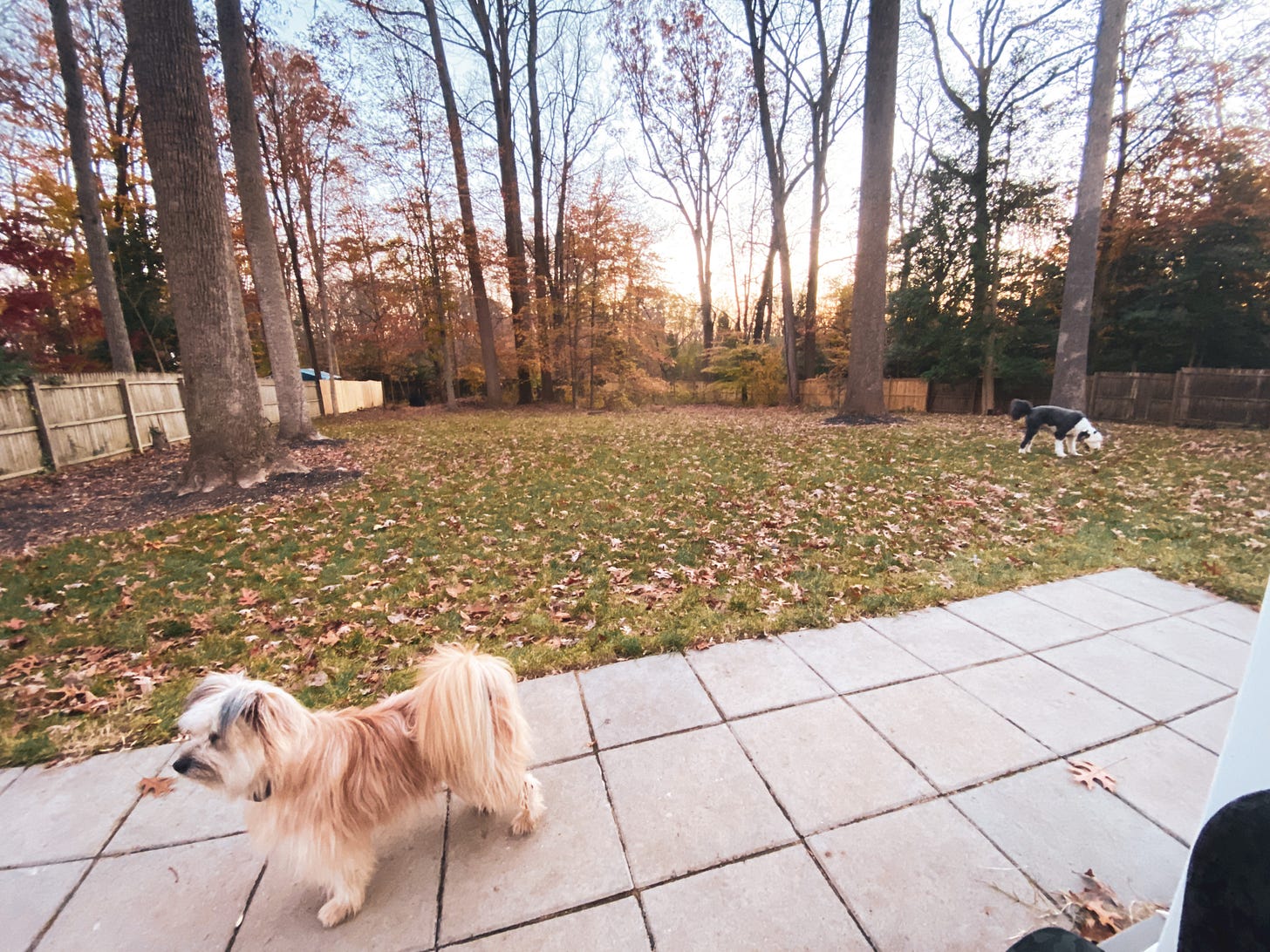Why I Stopped Trying to "Change How My Dog Feels" in the Moment
It turns out emotions, like behaviors, are shaped by context—and there's a smarter place to start.
As trainers, one of our big goals is to help dogs feel more comfortable in the world around them. Early in my training journey, I used a strategy that seemed logical: feeding dogs around their triggers to change their emotions. I thought that by pairing something positive, like food, with something they were behaving to escape or avoid, like a skateboard, I could change how they felt about it. But over time, and through a deeper understanding of behavior, I’ve shifted my approach. I don’t actually try to change emotions in the problem context. Instead, I use the way behavior works on this planet to better support my dogs: I figure out where the emotions (and other behaviors) I want my dog to have already show up – and start there.
Why It’s So Hard to Change Emotions in the Same Place They Show Up
As it turns out, it’s a lot harder than it sounds to change emotions in the context that those unwanted emotions already show up in. For what it’s worth, it’s also difficult to change observable behaviors in those contexts too.
Here’s why: Behavior, emotions, and cues are all being learned together.
While your dog may learn to bark and lunge when they see another dog, the emotions we describe as “fear” are also being captured in that context.
And the conditions can be bigger than just the presence of another dog. The broader environmental context of that street in your neighborhood where a dog barks from a yard may get control of the behaviors and emotions that you are trying to change. Then even absent the dog, those fearful emotions and barking behaviors may show up on that street.
The environment cues the observable and emotional behavior. It can be really hard to get new behaviors and emotions to show up in the conditions where those unwanted behaviors and emotions already appear if you are starting literally right in them. Those cues mean something else.
Counterconditioning Isn’t a Cure-All—Here’s What It Actually Does
You’ll often hear people call feeding dogs around triggers “counterconditioning.” Counterconditioning is a valid, useful strategy for helping dogs with fear, but the term is often used more broadly than its technical definition. For example, people will say they are using counterconditioning to change their dog’s barking and lunging behaviors around skateboards, which are actually operant behaviors (behaviors influenced by the consequences that follow them).
But with counterconditioning, an animal's respondent behavior (think instantaneous, involuntary reflex – often physiological response) to a stimulus is replaced with an opposite automatic response. For example, if the oven beeping elicits emotions we call fear and respondent behaviors like tension, rapid breathing and heart rate, then the beeping could be paired with food so that it elicits positive emotions and behaviors like steady breathing, relaxed muscles, etc. So technically speaking, counterconditioning works with respondent behaviors, not operant ones.
Either way, this sounds good, right? Out with the fear and in with the positive feelings! But in order for it to work, the new eliciting stimulus has to elicit a stronger response than the old fear response. In other words: the appetitive stimulus would have to be more appetitive than the aversive stimulus is aversive, and that can be tricky.
So if all the cues in a given environment already evoke and elicit behaviors and emotions we consider “fearful,” this is going to be a really challenging environment to work in. Again, the context and cues already have behaviors and emotions attached to them.
A big reason why so many behavior professionals emphasize keeping a dog “under threshold” (aka in conditions where the “unwanted” behaviors are not evoked) and encourage the use of management is so the unwanted behaviors and feelings are not rehearsed over and over again in that context (making it more and more likely for those behaviors and emotions to show up in that context and potentially others as learning occurs).
(FWIW: counterconditioning works better when done with systematic desensitization.)
Where is your dog already comfortable?
Keep reading with a 7-day free trial
Subscribe to Tails of Connection's Substack to keep reading this post and get 7 days of free access to the full post archives.



